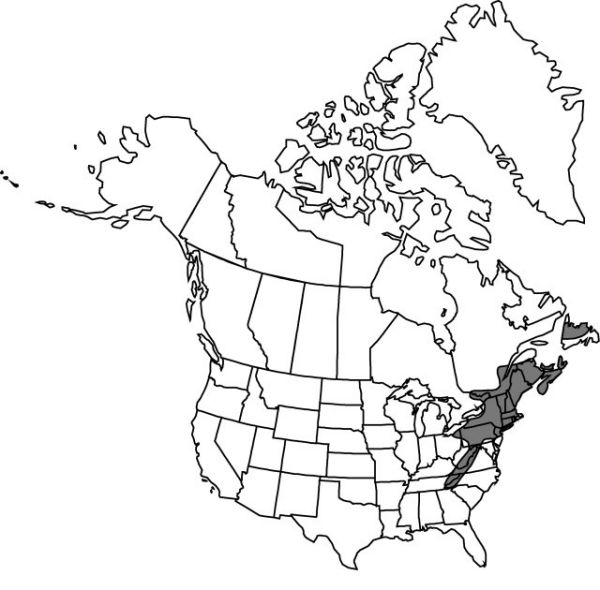Platanthera grandiflora
Gen. Sp. Orchid. Pl., 294. 1835.
Plants 27–120 cm. Leaves 2–6, widespreading and recurved to somewhat ascending, scattered along stem, gradually reduced to bracts distally; blade lanceolate, elliptic, oblongelliptic, or oblong-obovate, 13–24 × 2.5–9 cm. Spikes lax to rather dense. Flowers resupinate, showy, lavender to rose-purple, rarely white; lateral sepals spreading to somewhat reflexed; petals ovate, oblong, elliptic-oblong, or oblong-obovate, margins crenate to dentate-lacerate, sometimes nearly entire; lip descending to somewhat porrect, deeply 3-lobed, without basal thickening, 10–25 × 14–26 mm, distal margins of lobes fringed, usually deeply, lateral lobes sometimes perpendicular to middle lobe, lateral lobes cuneate, often broadly so, middle lobe broadly cuneate-flabellate, often emarginate to 2-fid; spur clavate, 15–35 mm; rostellum lobes directed forward, spreading, angular; pollinaria nearly straight; pollinia remaining enclosed in anther sacs; viscidia orbiculate; ovary slender to stout, 12–25 mm. 2n = 42.
Phenology: Flowering Jun–Aug.
Habitat: Alluvial and swamp forests, stream banks, seeping slopes, marshes, sphagnum bog forests, mesic wooded slopes, old fields
Elevation: 0–1800 m
Distribution

N.B., Nfld. and Labr. (Nfld.), N.S., Ont., P.E.I., Que., Conn., Maine, Md., Mass., N.H., N.J., N.Y., N.C., Ohio, Pa., R.I., Tenn., Vt., Va., W.Va.
Discussion
Platanthera grandiflora is known to hybridize with P. lacera in the northeasternmost portion of its range, where the species bloom simultaneously. The name P. ×keenanii P. M. Brown has recently been proposed for these hybrids, but the complex synonymy of this group dictates that types be checked for possible priority. See the discussion under P. lacera. A few specimens also suggest very rare hybridization with P. psycodes (W. P. Stoutamire 1974).
Rare white-flowered plants may be separated from 23. Platanthera leucophaea by the orientation of the pollinia.
Selected References
None.